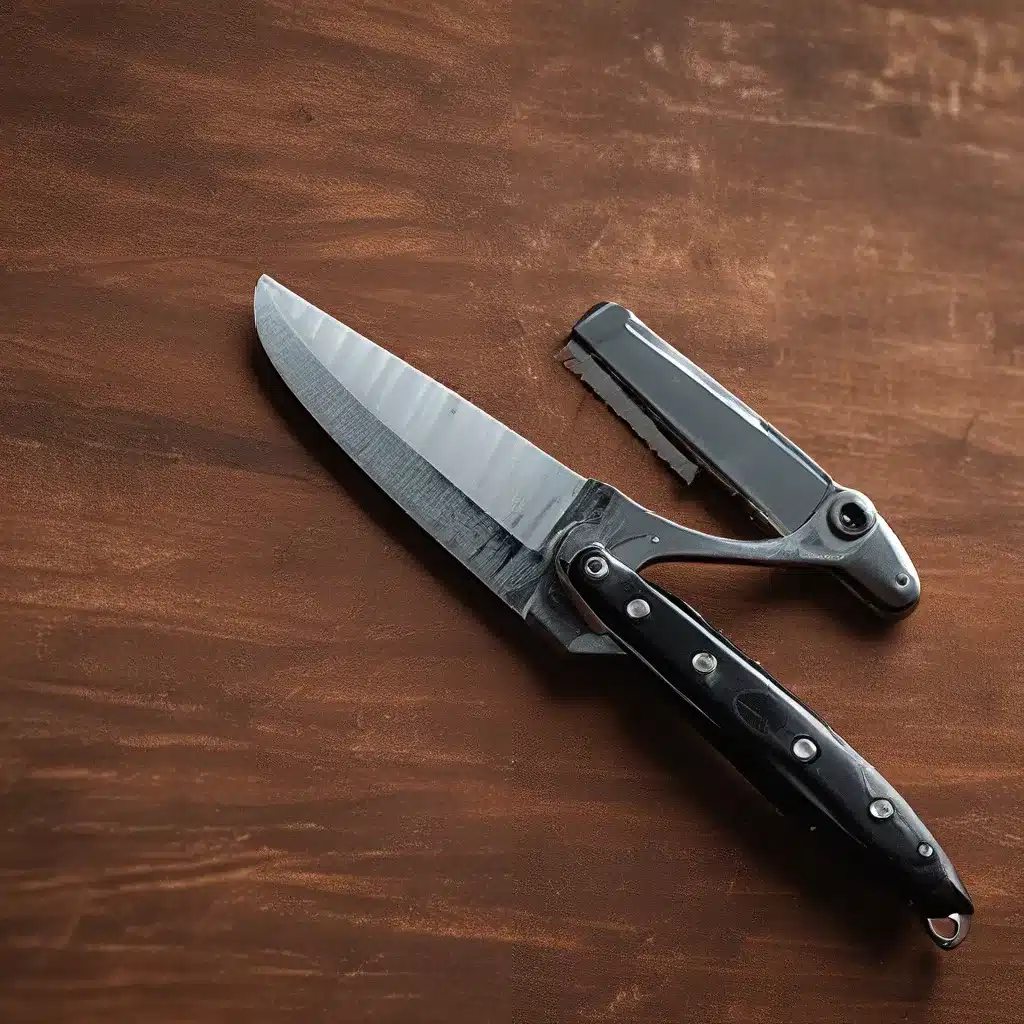
Raise your hand if you’ve ever experienced the frustration of trying to slice through a tomato or carve a roast, only to have your knife glide through the flesh like a dull butter knife. I know I have – and let me tell you, it’s enough to make even the most seasoned home cook want to throw in the towel and reach for the nearest pair of kitchen shears.
But fear not, my fellow blade enthusiasts! Today, I’m going to let you in on the secrets to keeping your knives in tip-top shape, so you can tackle any culinary challenge with ease and confidence.
The Importance of a Sharp Blade
I’m sure we can all agree that a sharp knife is an absolute necessity in the kitchen. Not only does it make the task at hand infinitely easier, but it also reduces the risk of accidents – after all, a dull blade requires more force to cut through ingredients, increasing the chances of the knife slipping and causing an injury.
But the benefits of a razor-sharp edge extend far beyond just safety and convenience. When your knives are properly maintained, you’ll find that they can effortlessly glide through even the toughest ingredients, resulting in cleaner, more precise cuts. This not only elevates the presentation of your dishes but also helps to preserve the delicate flavors and textures of your ingredients.
The Sharpening Dilemma: Diamond Stones, Water Stones, and More
Now, I know what you’re thinking: “Alright, I get it – sharp knives are important. But how the heck do I keep them that way?” Well, my friends, this is where the real fun begins.
As I’ve learned from the woodworking experts, there are a multitude of sharpening methods out there, each with its own pros and cons. From diamond stones and water stones to abrasive papers and even buffing wheels, the options can feel a bit overwhelming.
One method that’s often touted as the holy grail of sharpening is the use of a Tormek wet grinder. These specialized machines can produce incredibly sharp and consistent edges, but they come with a hefty price tag and can be a bit cumbersome to use. On the other hand, the Bloodroot Blades team swears by the simplicity and effectiveness of hand-sharpening with a few basic whetstones.
Ultimately, the “best” sharpening method comes down to personal preference, budget, and the types of knives you’re working with. The key is to experiment and find what works best for you and your blades.
The Ruler Trick: A Game-Changer for Plane Blades
One particularly interesting sharpening technique I came across is the “ruler trick” – a method used by many woodworkers to maintain the razor-sharp edges on their plane blades. As described by a seasoned expert, the ruler trick involves creating a tiny secondary bevel on the back of the blade, which helps to remove any wear or damage to the edge without having to grind down the entire primary bevel.
This technique is particularly useful for those of us who use our plane blades frequently, as it allows us to keep them in top condition with minimal effort. And the best part? It’s incredibly easy to learn – just a matter of angling the blade slightly as you hone it on your whetstone.
Mastering the Strop: Polishing for a Flawless Edge
Now, once you’ve got the basic sharpening down, there’s one more step you won’t want to skip: stropping. This simple technique involves running your blade along a piece of leather or even a sheet of newspaper, and it’s the secret to achieving that mirror-like finish on your knives.
As the experts at Grown Man Shave explain, stropping helps to realign the microscopic teeth on the edge of your blade, removing any burrs or imperfections that may have developed during sharpening. And the best part? It’s quick, easy, and inexpensive – all you need is a bit of leather or even a piece of newspaper.
Putting it All Together: Maintaining Your Blades for a Lifetime of Use
Now, I know what you’re thinking: “Wow, that’s a lot of information to take in!” And you’re absolutely right. Keeping your knives in top shape is no small feat, but trust me, it’s well worth the effort.
The key is to find a sharpening routine that works for you and stick to it. Whether that means breaking out the Tormek once a year or honing your blades on a whetstone every few weeks, the important thing is to be consistent. After all, a sharp knife is a loyal companion in the kitchen, and with the right care and attention, it can serve you for years to come.
And let’s not forget about the other factors that can impact the longevity of your blades, like the type of cutting board you use and how you store your knives. As the team at Bon Appétit reminds us, wooden cutting boards and magnetic knife strips are the way to go, and you’ll want to steer clear of dishwashers and glass surfaces at all costs.
So there you have it, my fellow kitchen warriors. With a little bit of elbow grease and a whole lot of patience, you can keep your blades in peak condition for years to come. And who knows, maybe you’ll even impress your friends and family with your knife-sharpening prowess the next time you whip up a gourmet meal.
Now, if you’ll excuse me, I’ve got some honing to do. Happy cooking, and remember – no blood on the wood!


